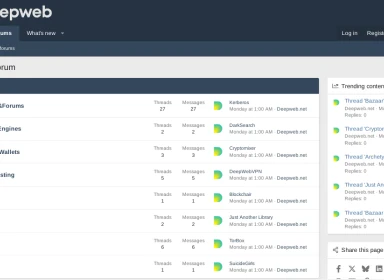
In an era where data breaches, cyberattacks, and digital espionage have become commonplace, secure communication methods are paramount. Whether you're sharing sensitive information with colleagues, sending confidential documents, or communicating privately with friends and family, ensuring your messages and files remain confidential is essential. This is where one-time notes come into play.
One-time notes, also known as self-destructing or ephemeral messages, provide security and privacy beyond conventional messaging methods. These notes are designed to be read once and only once, with a predetermined expiration time, making them an ideal choice for anyone seeking secure and private communication.
This comprehensive guide delves into the world of one-time notes, exploring what they are, how they work, and why they should be a part of your secure communication toolbox. We'll also provide practical, step-by-step instructions on creating and using one-time notes effectively, along with tips and best practices for maintaining digital privacy.
Understanding One-Time Notes
At their core, one-time notes are digital messages or files with a limited lifespan. Once created and shared, they can only be accessed by the intended recipient for a predefined period, after which they self-destruct or become inaccessible. This ephemeral nature of one-time notes ensures that the information within them remains confidential and cannot be accessed by unauthorized parties, even if the message falls into the wrong hands.
How One-Time Notes Differ from Traditional Messaging
To grasp the significance of one-time notes, it's essential to understand how they differ from conventional messaging methods. In traditional messaging apps or email, once you send a message, it typically remains in the recipient's inbox indefinitely unless manually deleted. This can pose a significant security risk if sensitive information is involved, as messages can be accessed or forwarded without your knowledge or consent.
On the other hand, one-time notes are designed to eliminate this risk. They are programmed to self-destruct after being read, ensuring the information is no longer accessible after a specific time frame. This not only safeguards the content of the message but also mitigates the risk of accidental or unauthorized sharing.
Benefits of Using One-Time Notes for Security
One-time notes offer several advantages that make them a valuable tool for secure communication:
- Enhanced Privacy: One-time notes protect your privacy by ensuring your messages cannot be stored or accessed beyond the designated time frame.
- Reduced Exposure: With self-destructing messages, there's less risk of exposing sensitive information in the event of device theft or unauthorized access.
- Message Control: You control how long the recipient can access your message, giving you greater control over your digital communications.
- Compliance: For businesses and individuals dealing with regulatory requirements like GDPR, one-time notes can aid compliance by minimizing data retention.
- Secure File Sharing: In addition to text messages, one-time notes can be used for sharing files and documents securely.
Creating One-Time Notes
Creating one-time notes is a fundamental step in effectively utilizing this secure communication method. In this section, we'll walk you through the process, from selecting the right platform to adding content and encrypting the note.
Step-by-Step Guide to Generating One-Time Notes
- Choosing a Secure Platform or Application
The first step in creating one-time notes is to select a reliable and secure platform or application. Not all messaging apps or services provide one-time note functionality, so choosing one that prioritizes security and privacy is crucial.
Look for platforms that offer end-to-end encryption, ensuring that your messages are scrambled on your device and only deciphered on the recipient's device. Popular options that support one-time notes include Signal, Telegram (Secret Chats), and certain features in secure email services like ProtonMail.
- Creating a New One-Time Note
Once you've chosen a suitable platform, open it and initiate the process of creating a new one-time note. This may involve selecting a specific chat or conversation mode, depending on your application. - Setting Expiration Time
One of the critical features of one-time notes is their self-destructive nature. When creating a note, you'll typically have the option to set an expiration time. Choose a time frame that aligns with your communication needs. For sensitive information, a shorter expiration time may be preferable (e.g., minutes or hours). For less sensitive content, you can opt for a longer timeframe (e.g., days or weeks). - Adding Content to the Note
With the note created and the expiration time set, it's time to add the content you want to share. This could be a text message, an image, a document, or any other type of digital content. - Encrypting the Note
Encryption is the cornerstone of one-time notes' security. When you send a one-time note, the content is encrypted on your device before being transmitted to the recipient. Only the recipient's device, using their private key, can decrypt and access the content.
Behind the scenes, the encryption process involves generating a unique key for this note. This key is used to scramble the content in a way that can only be unscrambled by the recipient's device. The encryption process should be automatic and transparent to you, but using a platform that employs robust encryption standards is essential.
Best Practices for Creating Strong and Secure One-Time Notes
Creating one-time notes is one thing, but ensuring they remain secure is equally vital. Here are some best practices to follow:
- Choosing a Strong Passphrase or Password: When setting up your one-time note, you may be required to create a passphrase or password for additional security. Ensure this passphrase is solid and unique, combining uppercase and lowercase letters, numbers, and special characters. Avoid using easily guessable phrases or passwords.
- Avoiding Common Mistakes: Be cautious about common mistakes that compromise your one-time note's security. These include accidentally sharing the decryption key with unauthorized individuals, failing to set an expiration time, or using a platform with known security vulnerabilities.
- Using Random Content Generation: Employ random content generation within your one-time notes. Some platforms offer features that allow you to generate random characters or words, making it more challenging for attackers to predict or guess the content of your notes.
By following these steps and best practices, you can create and send one-time notes that enhance digital security and protect sensitive information effectively. In the next section, we'll explore how to securely send and receive one-time notes.





Comments 0